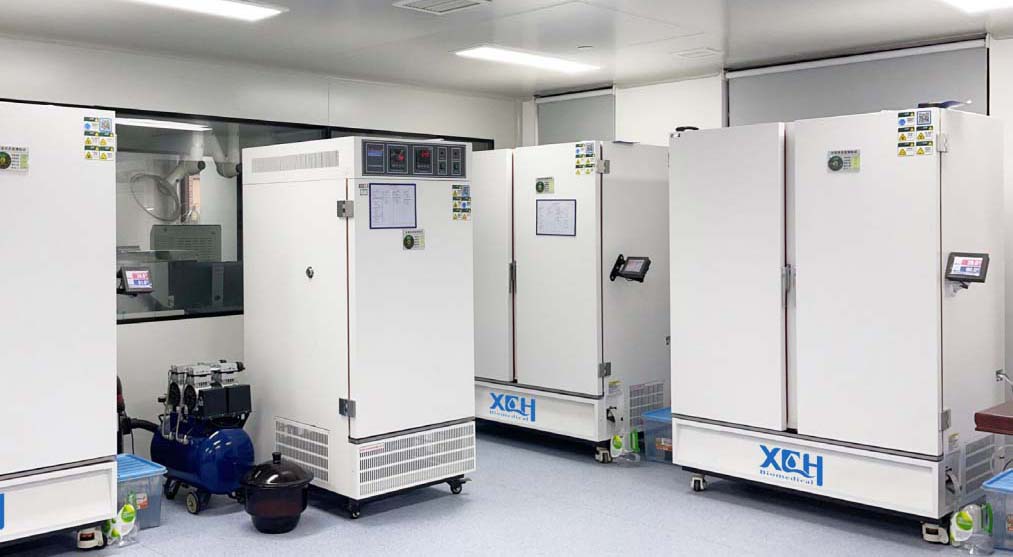To understand the importance of humidity testing, just look at a world map. The products that drive our lives need to work in all climates.
The phone should also work fine in the dry heat of the Arizona desert and the high humidity of the Atlantic coast. The same goes for life-saving medical equipment, cars, airplanes, and more.
Companies environmental test these products under controlled conditions to confirm that they work as designed and to understand where they fail. By doing so, these companies can set expectations for consumers or work to address potential flaws before entering the market.
Here's what you need to know about humidity test chambers.
Humidity system
As the temperature increases, so does the air's ability to hold moisture. This is why temperature and humidity chambers record humidity as a percentage of relative humidity (RH): 5 degrees Celsius of RH is not the same as 20 degrees Celsius of RH.
Likewise, the dew point, the temperature at which the air must be cooled for it to condense, must also be taken into account in the test.
Over the years, test chamber manufacturers have devised different methods to create wet conditions. Older systems involved misting or water pans. You'll now find atomization more common in salt spray chambers, where a direct and constant water supply is connected to the nozzle. Mist or fog drifts into the work area. On the other hand, immersion pan systems are self-evident. A heater immersed in the water pan slowly produces steam that fills the workspace.
However, leading test chamber manufacturers use more modern steam generator systems. The steam generator allows you to precisely control the relative humidity measured by an electronic sensor. They can be sized to fit any chamber and larger workspace. Multiple generators can be used to improve accuracy.
The steam generator is an enclosed stainless steel or copper tube. The heating element heats a constant source of water, producing steam or steam. The steam moves to the plenum, mixes with the conditioned air, and enters the workspace with the proper temperature and relative humidity.
It is important to pay attention to the quality of the water to make the humidity system last. If the water is rich in minerals, it can cause sediment to build up. If the water is too clean or too pure, it will remove minerals from the metal as it passes through the test chamber.
Recommendations vary by manufacturer. For example, Associated Environmental Systems recommends defining ranges for resistivity (0.05MΩ*cm to 6MΩ*cm), conductivity (20µS to 0.167µS), and total dissolved solids (TDS) (10 ppm to 0.083 ppm).
Therefore, in addition to the steam generator system, test chambers are often equipped with desalination cylinders to properly condition the water. These (see below), as well as the water itself, should be checked regularly before installing and using the test chamber.
Standard humidity chambers have RH ranging from 20% to 95%, but you can customize your chamber to achieve very low or high humidity. A special high humidity sensor allows you to achieve up to 98% RH, while a desiccant air dryer reduces it to 5%. Finally, dry air purification allows you to cycle between extreme humidity conditions.
Humidity Chamber Maintenance
Regular maintenance is critical to making a test chamber durable, but arguably even more important for a humidity chamber. As important as water is, it can leave problems.
Deposits can build up in the steam generator. If left untreated, standing water can lead to the development of mold or mildew. It can also corrode the metal over time. If you notice leaks or other signs of wear, it may be too late for a quick fix.
This is why the condition of the water is so important. You should perform an internal water test as part of your quarterly inspection to ensure it is within recommended conditions. If you have a demineralizer, you should check it monthly. When about a quarter of the original color remains, it's time to replace the ink cartridges.
You also need to take extra maintenance steps during downtime. You can run your chamber even if you don't test to make sure the system is functioning properly. If you plan to take a long break, wash the outside tank and remove the water from the interior by turning off the water source and opening the drain valve.
A repair professional should fix any problems you find as soon as possible, but begin proper maintenance as soon as you purchase your chamber. Discuss with the manufacturer to develop a maintenance schedule that will allow you to test for 10 years or more.
Buy a Constant Temperature & Humidity Chamber
There is no one-size-fits-all test room. Your testing requirements and the products, equipment and components you plan to test will determine the characteristics of your chamber.
This is beyond capability. For example, highly active live loads require larger workspaces indoors so they do not affect specified conditions. The surroundings you are testing with are also important.
An experienced manufacturer is required to provide a solution that is right for you. Thchamber builds custom test chambers to meet your specifications. Examples are high humidity sensors and desiccant air dryers. Not to mention, the standard test chamber is equipped to enable remote monitoring and testing.

Thchamber provides support and service programs throughout the life cycle of the test chamber. You can test as much as you want with the leading humidity test chamber manufacturers in your team.
